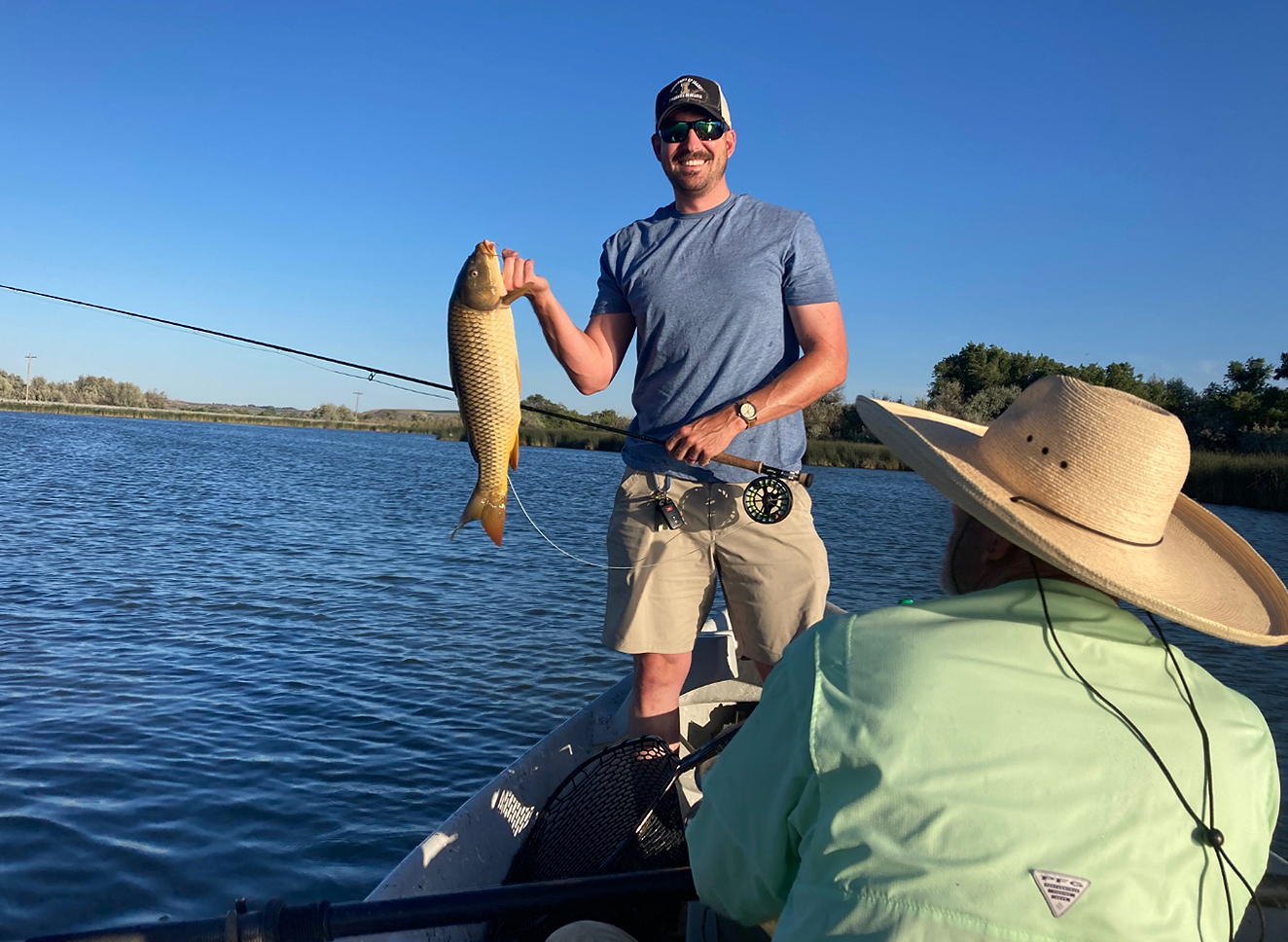Any angler who recreates in and around the Snake River has likely come face to face with a common carp at some point. Built like a tank and equipped with large scales, serrated fins, and whiskers, these golden-colored fish don’t look like they belong around here. Given their large size and tendency for feeding in shallow backwaters, they are also hard to miss. While they are generally criticized or outright disregarded by anglers, they do present a “golden” fishing opportunity for those looking for a new challenge.

Carp: A 'golden' opportunity?
Built like a tank and equipped with large scales, serrated fins, and whiskers, these golden-colored fish don’t look like they belong around here.

Common Carp are a fish native to Eurasia that can reach impressive sizes, some over 50 pounds! Carp were originally introduced to the United States by the U.S. Fish Commission in the late 1800s to provide a readily available source of protein to a growing nation. Since their introduction they have become widely distributed throughout the country and are commonly found in almost every state.
Carp are a highly resilient fish and their ability to adapt and thrive in almost any habitat has led to their widespread success. This success has also led to conflicts and competition with other more desirable game fish species like bass and panfish. Due to these conflicts and their association with dirty backwaters, many anglers have labelled this species as invasive. Carp can cause a lot of damage to ecosystems, and in some cases Idaho Fish and Game has used methods to reduce their numbers or eradicate them from certain waterbodies.
Reputations aside, carp are still a blast to catch on a rod. In fact, carp are considered a premier sportfish in Europe and Asia, and they support valuable fisheries there. In addition to reaching large sizes, Idaho angling record for Carp is 34 pounds, carp are very wary, and those that have hooked one know they fight hard. These qualities have earned them the nickname “poor-man’s bonefish”, “suburban salmon”, or “mud marlin”.

Regardless of what you call them, carp are an abundant and challenging target for the adventurous angler in the Magic Valley.
Carp can be caught all year long using a variety of tackle. The best places to target carp are usually in the shallow backwaters of lakes and rivers where they prefer to feed. Bait anglers can find success using a simple weighted swivel and hook tipped with nightcrawlers or corn. Find where carp are feeding and cast in the direction they are heading and wait for them to find your bait.
Fly-fishing for carp is also an option that has gained popularity in recent years. Sight-casting to feeding carp with small leech patterns as one would to Bonefish on tropical flats can be very productive in the right conditions.

For those of you that prefer hunting to fishing, common carp make a fantastic target for archery equipment. Given a target-rich environment and no limitations on carp harvest, bow-fishermen can bank tons of practice with their bows while having a great time doing it.
Regardless of your preferred method, target carp in the morning and evenings when they are actively feeding and be prepared to spook a lot of fish. Don’t be afraid to eat what you catch as well. Carp caught from clean, cold water can be delicious. A quick Google-search will show a multitude of recipes meant for carp to suit anyone’s taste, but batter fried carp nuggets are always a safe bet. These fish aren’t going anywhere soon, so why not try your hand at catching one? You may find a new favorite pastime while you’re at it.
For more information about fisheries in the Magic Valley Region call (208) 324-4359.
